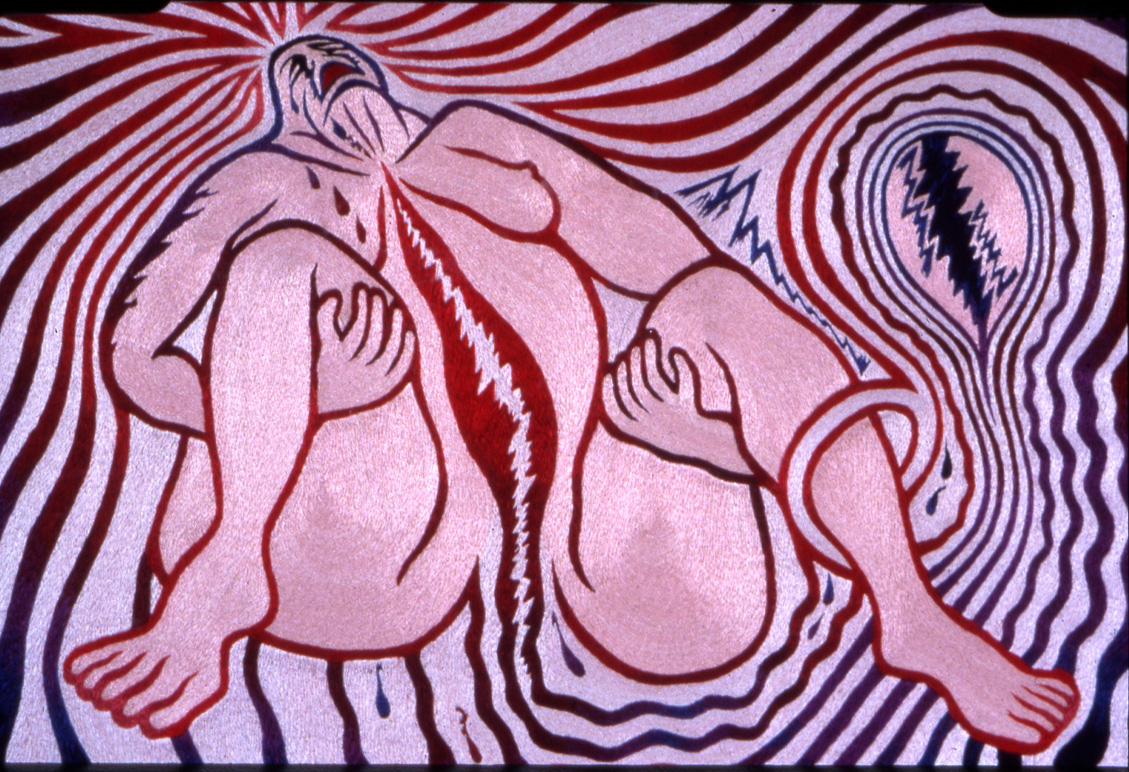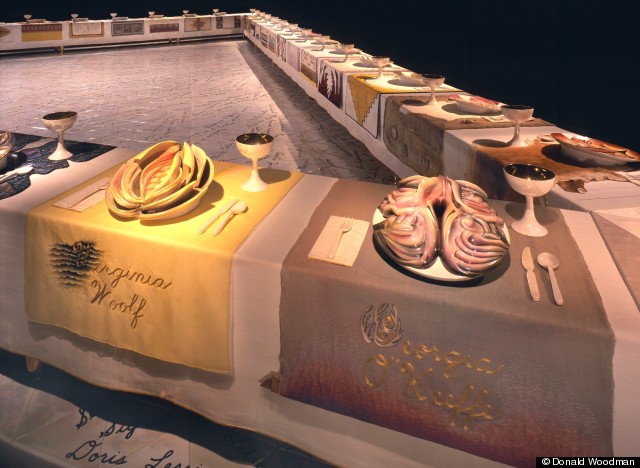Judy
Chicago, born Judy Cohen, is a world renowned feminist artist known for her large
collaborative art installation pieces which examine the role of women in history and
culture. She was one of the most influential feminist artists in the
US. By the 1970s, Chicago had coined the term "feminist art"
and had founded the first feminist art program in the United States. Chicago's
work incorporates skills stereotypically placed upon women artistically, such
as needlework,
counteracted with stereotypical male skills such as welding and pyrotechnics, which she uses extensively throughout her works.
Judy Chicago with her work The Dinner Party (above). Judy Chicago spraypainting, a technique she learned during auto mechanic and welding training (below)
Judy Chicago grew up in a very liberal family and was very
strongly influenced by her father. Her father, Arthur Cohen, came from a long
lineage of rabbi's, and was a labor organizer and a Marxist, and was affiliated
with the American Communist Party during the McCarthyism era. As she later told LA
Weekly, "I was raised in a family that believed in equal rights for
women, which was very unusual for that time. The bad news was they never
bothered to tell me that not everyone else believed in that, too." (LA
Weekly, What I Learned From Male Chauvinists). After the death of her father
and her husband, she chose to change her name to Chicago, rather than following
male dominated naming practices.
For one of her projects, The Birth Project, Judy Chicago collaborated with over 150 needleworkers to create dozens of images combining needlework, spraypainting, and painting that celebrates the gift of life and birth. It represents all aspects of the birthing process- from the painful to the mystical.
The Birthing Project
Her
most influential work is The Dinner Party, which, as she describes it, "is
a sort of reinterpretation of the last supper from the point of view of those
who had done the cooking throughout history" (The Dinner Party: A Tour of
the Exhibition). It depicts place settings for 39 mythical and historical women
with notable historical accomplishments, each complete with a table runner
embroidered with the woman's name and images and symbols relating to her
accomplishments, a napkin, utensils, a goblet and a plate. The Dinner Party celebrates traditional female
accomplishments such as textile arts (weaving,
embroidery, sewing) and china painting, which have been framed as craft or domestic art, while at the same time using techniques such as welding that have been stereotyped as mainly a male form of art.
Place tables at the Dinner Table (view tour here)




No comments:
Post a Comment